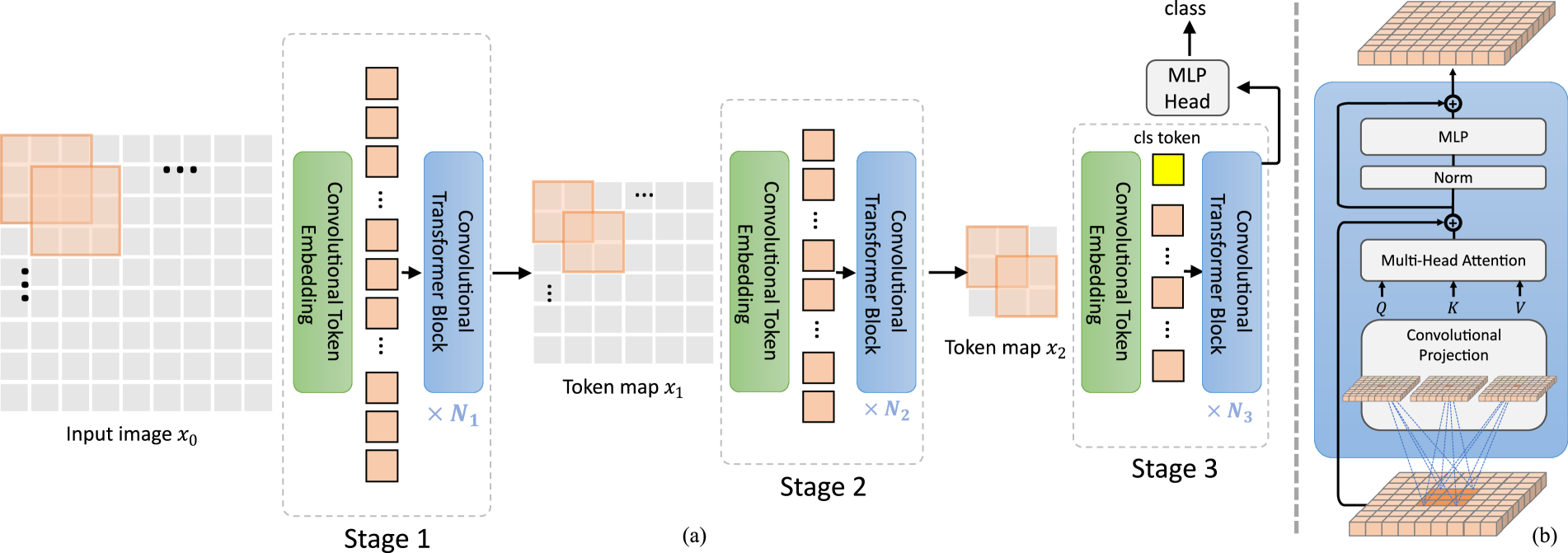CvT¶
Transformer Vision Transformer Image Classification
- class lucid.models.CvT(in_channels: int = 3, num_classes: int = 1000, act_layer: ~typing.Type[~lucid.nn.module.Module] = <class 'lucid.nn.modules.activation.GELU'>, norm_layer: ~typing.Type[~lucid.nn.module.Module] = <class 'lucid.nn.modules.norm.LayerNorm'>, spec: ~lucid.models.imgclf.cvt.CvTSpec | None = None)¶
The CvT (Convolutional Vision Transformer) class implements a hybrid vision transformer that integrates convolutional layers into the self-attention mechanism. Unlike traditional Vision Transformers (ViTs), CvT introduces depthwise convolutional projections in the query, key, and value transformations, which enhances inductive biases and improves efficiency. This hybrid approach helps in capturing both local and global features effectively while reducing computational cost.

Class Signature¶
class CvT(
in_channels: int = 3,
num_classes: int = 1000,
act_layer: Type[nn.Module] = nn.GELU,
norm_layer: Type[nn.Module] = nn.LayerNorm,
spec: CvTSpec | None = None,
)
Parameters¶
in_channels (int): Number of input channels (e.g., 3 for RGB images).
num_classes (int): Number of output classes for classification.
act_layer (Type[nn.Module]): Activation function used in the model (default is nn.GELU).
norm_layer (Type[nn.Module]): Normalization layer to be used (default is nn.LayerNorm).
spec (CvTSpec | None): Optional model specification defining the architecture details.
Examples¶
>>> import lucid.models as models
>>> cvt = models.CvT(
... in_channels=3,
... num_classes=1000,
... )